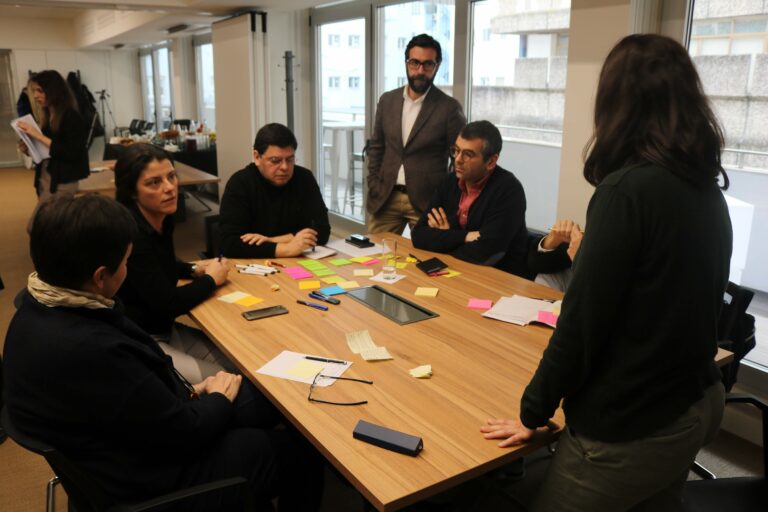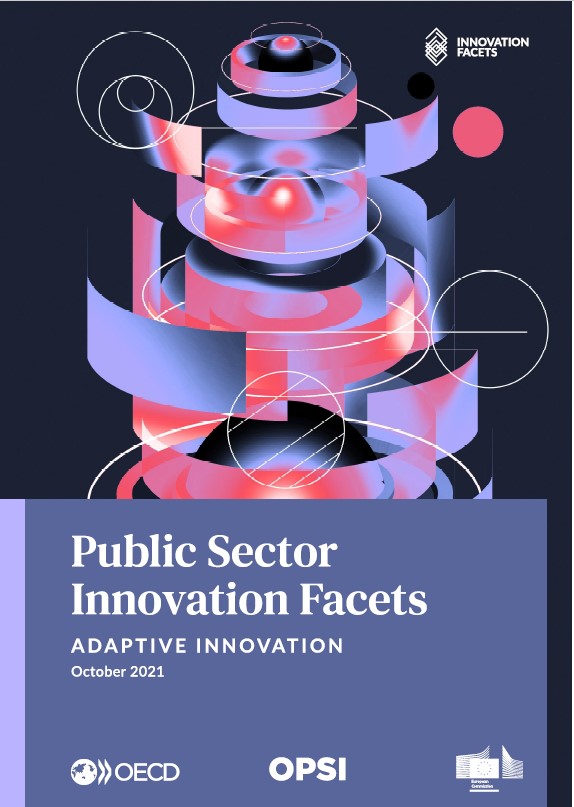Public Sector Innovation Facets: Adaptive innovation

What is adaptive innovation?
Adaptive innovation tests and tries new approaches in response to a changing operating environment. In environments demanding both stability and the need to act quickly, such as during crises, adaptive innovation supports public administrations by simultaneously strengthening resilience and building adaptive capacity. In addition, adaptive innovation can help avoid fragmentation of experimental practices and systematise innovative action in government.
Main drivers and support structures of adaptive innovation
A variety of environmental, organisational and individual drivers can push governments to explore adaptive innovation, all of which operate at different levels. Environmental drivers lie outside the public sector as such and describe the context in which public agencies operate. Organisational drivers are inherent to the capacities and features of the public sector. The individual level represents the specific characteristics of individuals within public agencies that drive adaptive innovation.
In addition to the main drivers, a number of vital structures and programmes sustain adaptive innovation in the public sector over the long term. Enabling conditions include organisational structures, decentralised governance structures, infrastructure, relationships and partnerships, space for experimentation and evaluation and learning.

Tools and methods
The main methods and tools that support adaptive innovation in the public sector include Human-Centred Design, the Agile methodology and design thinking.
User-centricity as a guiding principle
Both human-centred design and Agile approaches in the public sector focus strongly on service users, whether in broad policy context or at the service delivery level. It involves constant user feedback on the end result to develop services and products that serve their users and actively take the needs into account through user research.
Agile as a methodology
The Agile methodology is a software development approach whose principles imply strong collaboration, iteration and user-centricity. It challenges the traditional waterfall approach to public projects, where one project phase is executed after another and project outcomes are predefined. This dynamic and flexible approach thereby promises higher levels of adaptive innovation.

User-centricity in the Portuguese government – Lab X
LabX, the Laboratory for Experimentation in Public Administration, is a team at the Administrative Modernisation Agency in the Portuguese government. Created in 2017, LabX puts service design centred on citizens at the core of its work. The different phases of this methodology are: investigate, co-create and experiment. User-centred design has since been the hallmark of LabX and has highlighted the importance of citizen participation across the Portuguese government. One of the proposals that came out of co-creation was the development of a single point of access that could facilitate the onboarding of young people and access to digital public services, with more appropriate language and the development of mechanisms to support performance.
???????? Portugal
Design thinking
Design thinking is a frequently observed innovation approach in public sectors on which many specialised methodologies are built. In contrast to user-centricity, design thinking takes a broader view, challenging the existing approaches of public service delivery and public governance. Public administrators therefore apply design thinking to explore the problem space, generate alternative scenarios and enact new practices.
Skills and capacities needed for adaptive innovation
Enhanced skills and capacities at the leadership and employee level are most pertinent to ensure a conductive environment for adaptive innovation. Proactive and participatory leadership plays a significant role in creating space for adaptive innovation. Commitment from leaders is needed to adopt new approaches, provide support for teams that apply adaptive approaches such as Agile and enable innovation rather than control it. Furthermore, leaders need to be willing to create room for risk-taking, open up policy-making processes and allow for space for street-level bureaucrats to listen to stakeholder and understand user preferences.
On the employee level, individuals require a basic willingness to participate in adaptive innovation practices. In government, this means a mindset change to move from traditional to new approaches that favour adaptive innovation. Moreover, adaptability can be connected to employee resilience, requiring a range of skills such as stress management and building trust with different networks.

Experimentation at the French Central Bank
The French Central Bank has transitioned from initial experimentation with agile practices to an organisation-wide adoption of agile ways of working. First, few teams autonomously introduced the Scrum methodology with no official management support. Following this initial experimentation phase, the organisation undertook an evaluation and found that projects that were applying agile methods were more successful, both time wise and in terms of user satisfaction. These results were then reviewed by leadership and led to an official decision to adopt agile practices. Following this management decision, the agile methods were adapted and modified to fit the needs of the organisation.
???????? France
Policy relevance
The main challenges for adaptive innovation in practice are connected to finding a balance between adaptation and resilience, and incorporating adaptive innovation into core, everyday government practices. For example, during crises such as the COVID-19 pandemic, adaptive innovation supports quick action, without overly challenging the overall structure of government (as is the role of anticipatory innovation). As adaptive innovation looks at the governance system from the perspective of users or environmental changes, it does not challenge core government functions (at least at first). Hence, it also allows time for stability and learning in government, even when countered with rapid changes.
At the same time, it can be challenging to incorporate successes and lessons learned from adaptive innovation back into organisational practice in government. Iterative, user-centric development can be very useful, but strategic processes, budgeting procedures and connected cost-benefit analyses tend to present barriers to this type of innovation.
Nonetheless, adaptive innovation provides a promising path to apply interdisciplinary knowledge from other areas to new policy and public service challenges, and offers novel work practices and methods to enhance public service delivery.
This work received funding from the European Union‘s Horizon 2020 research and innovation programme under grant agreement No. 870913

Public Sector Innovation Facets: Adaptive innovation
Published on 27 October 2021.
